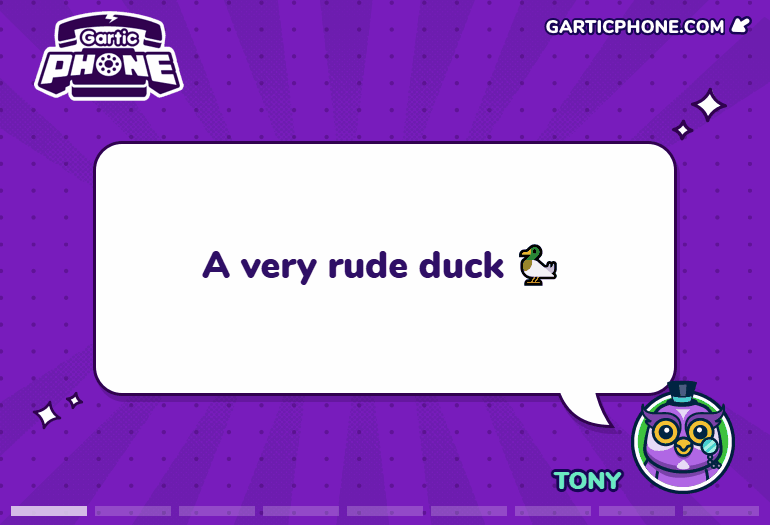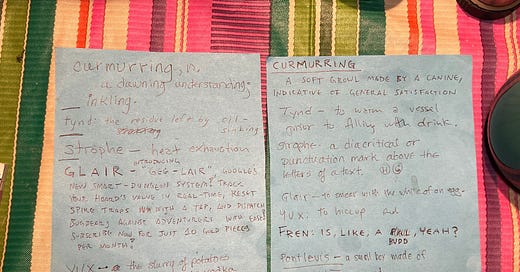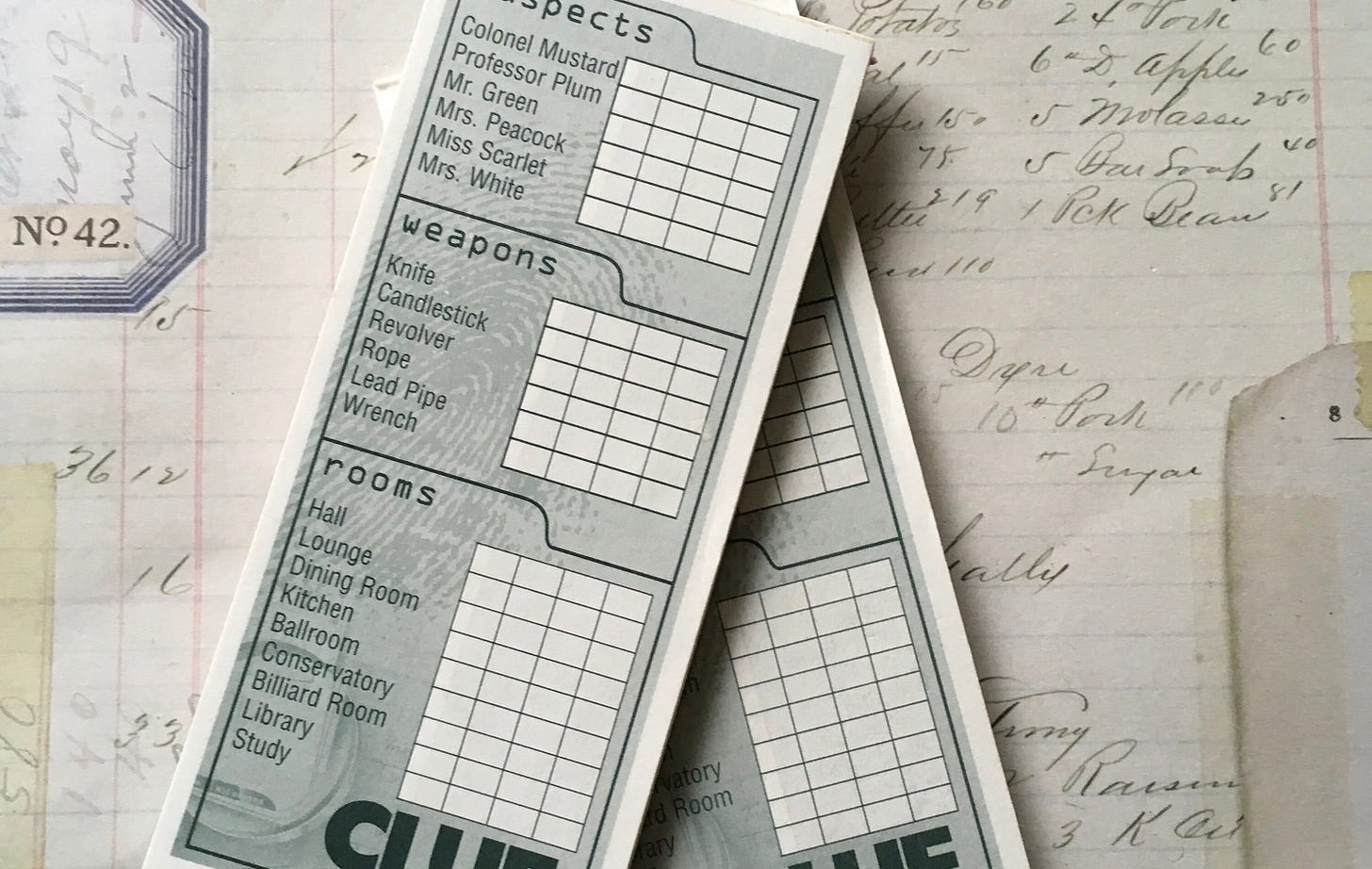There’s a game my family has played since I was a kid. It’s been around forever and a company or two have even tried publishing official versions of it, but we’ve just always called it “Dictionary”.
It’s a simple game: the first player picks a word from the oldest and most obscure dictionary you’ve got, and make sure nobody around the table already knows what it means. Then everyone writes a definition for the word — first player writes the real one, everyone else writes fake ones. Then the first player reads all of the definitions out and people vote on them. Do some scoring, rotate the papers around, and continue.
Now, arguably there’s a scoring system based on tricking people into voting for your fake definition while voting for the correct one. But my family cares less about points and more about having a good time. So in addition to “plausible definitions” we also go for ridiculous definitions. And while we sometimes vote on what we think is the real definition, we’re just as likely to toss a vote at a definition that’s particularly amusing. It’s been literal decades since any of us did any sort of point-tallying for this game.
But what we do care about is holding onto the slips of paper with all of the definitions (real and fake). Back on the homestead, there’s an entire desk drawer full of them, going back more years than I’d like to guess. Sometimes we kept them because we could never remember which of the definitions were the real one for the word. Sometimes it was because of a particularly funny definition we wanted to keep around. But mostly it’s because we’re a sentimental crowd, and it’s nice to have a physical artefact of a fun night of games, right there with everyone’s handwriting and silly doodles and everything.
And sometimes, when I finish other games, board- or video-, I wish I could keep a little memento of that experience the same way I do with Dictionary.
Memories of Past Games
Once, at a family-friendly bar in Seattle, I found an old copy of the Clue boardgame. Inside, I found that they still had the old deduction pads/score sheets, but that every single one had been used. And, sitting there with a beer and flipping through the old sheets, I realized that I could track how a person’s game had gone by the way they had filled out their pad.
Some people filled out sections with increasing intensity, blacking out incorrect options and ending with triumphant checkmarks. Some players used tiny, elegant tick marks and circles, ending by underlining the solutions. And more players than you might think kept running logs of their feelings in notes on the page — even if those “notes” were sometimes only four letters long.
There’s a long history of tangible game materials, of course. From the old Infocom “feelies” up to the sculptures and replicas of high-end Collectors’ Editions to the infinite variety of marketing geegaws that big games sell to the collector community, game publishers have known that their wealthiest, most dedicated fans would gladly spend more to have more of the game they love.
(Although that trend does appear to be moving from actual physical items to getting early-access time on a game, which seems like one of the worst trade-offs in gaming.)
More than an Achievement
Of course, modern games use Achievements to celebrate high points of what their players have been able to accomplish. And some systems like the PS5 automatically include screenshots or brief videos of the moments you gain those Achievements. But these are hardly the same.
There’s something very different about having a game artefact that comes from your own, personal playing of the game. These are items that depict the specific choices and joy that you had in your playing, not just the things that designers knew they were putting into everyone’s play of the game.

In short: the more creative expression a game allows from its players, the more important it is to have some artefact that remains from that creative expression. Players can achieve that for ourselves by taking time to make meticulous screenshots (like maps of our Civilizations or Dwarf Fortresses or so forth), but it really feels like games are doing us a disservice by not adding tools to cater to that desire.
Whether it’s a robust photo mode like Death Stranding has, or something more bespoke, like a postcard from your Civilization in Civ VII, there should be more ways to celebrate and remember your time with a game than mere screenshots. Especially games where a single campaign may last 10 hours or more.
What’s more, these are also things that you can enjoy even if you weren’t one of the players who was there at the time.

One of the joys of games is that the depth of our engagement with them means their experiences live on with us after we’re done playing. And naturally, we find ourselves thinking back to our times with them.
So more game makers should really consider ways to give us more artefacts of that experience. Not as tools for social media buzz, but just for our own satisfaction. Because every gamer likes having a memento of their time in a game they loved.





